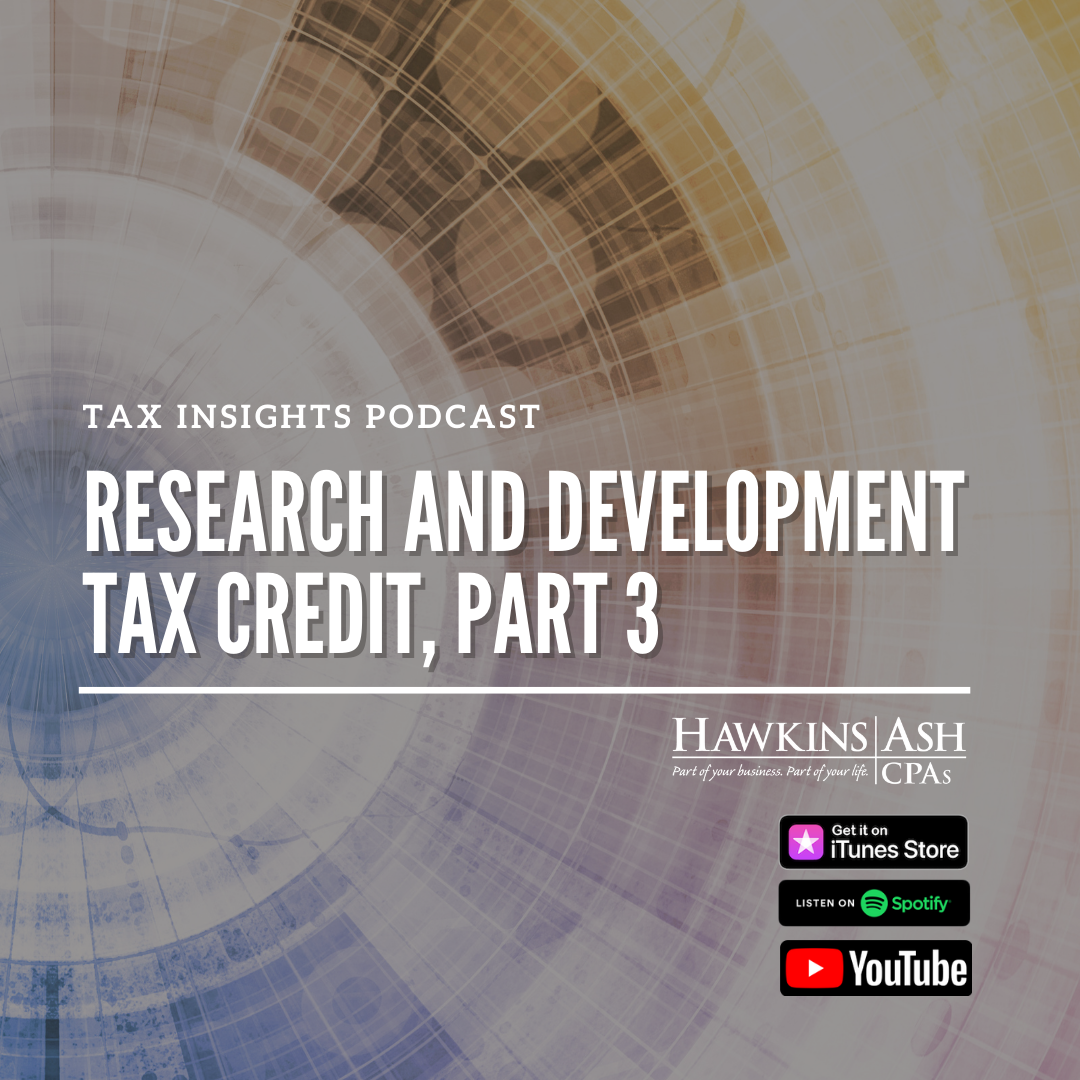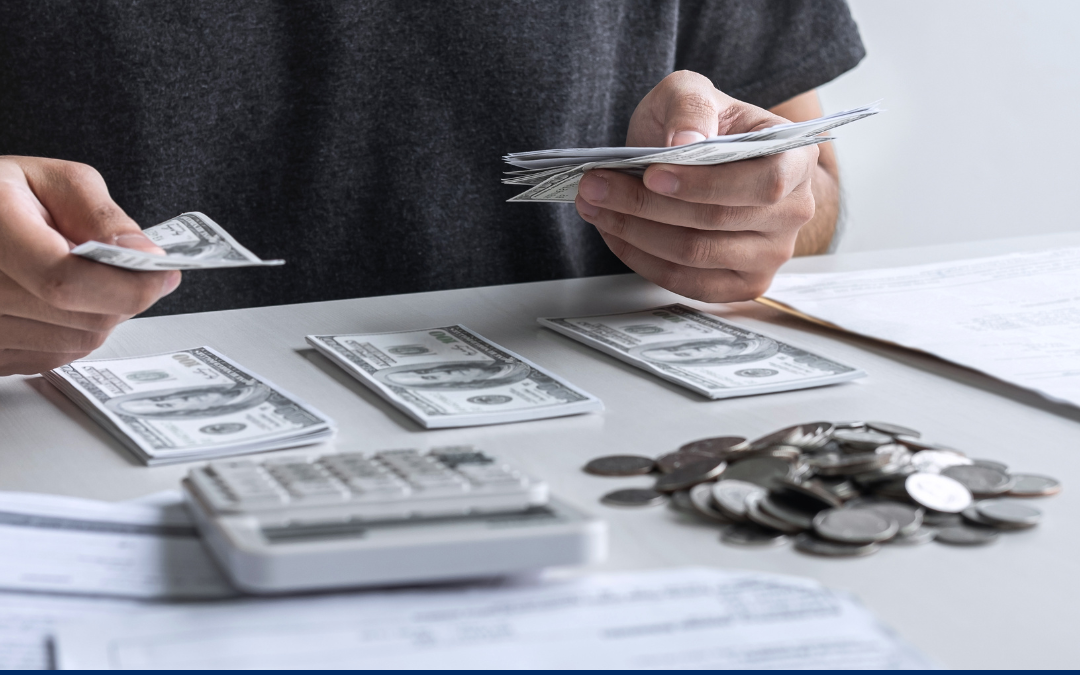Previously we talked about the benefits of the R&D tax credit, and how it is one of the most substantial incentives under U.S. tax law, and that many different types of businesses will qualify to be able to take the credit.
In this episode of Tax Insights Podcast, we will go more in-depth about some different aspects of the research and development tax credit including how to quantify the research being done and the basics of the credit calculation after determining the research is qualified based on the 4-part test. I’m joined By Charles Wendlandt of Hawkins Ash CPAs.
Does Your Company Qualify For the R&D Tax Credit?
Take the R&D Survey
Can You Remind Me Again, What Is the 4 Part Test?
- Sure. The 4-part test in order for an activity to qualify for the R&D tax credit is, the activity needs to be for a permitted purpose, there has to be a process of experimentation, there needs to be an elimination of uncertainty, and the research needs to be technical in nature.
I Have an Activity That Passes All Those, but What Expenses Do I Need to Keep Track of for the Credit Calculation?
- There are three main expenses to keep track of for the credit. Those three expenses are wages, supplies, and contract research expenses.
Maybe You Should Go in-Depth on Each of Those Because I Doubt the IRS Is Going to Let Me Use All My Wages for the Credit.
- You are right that the IRS will not let you use all of your wages to calculate the credit.
- However, wages are most likely going to be the main driver behind the expenses that do qualify for the credit.
- The wages that you will want to keep track of are those employees who are involved in direct R&D, so your engineers, designers, and drafters.
- The direct supervisors of those involved people just mentioned.
- The IRS says that you are able to count the wages of one level above those people as supervisors on the organization chart, which works great for GM or Ford, but is a bit more nebulous for small companies.
- What needs to be documented is proof that you are providing guidance to them through e-mails, notes from meetings, or documenting conversations.
- Finally the wages of direct support people qualify for the credit, those include prototype builders, shop floor people, and the time for wages spent on production
- Once all those wages are wrangled up, you’ll need to figure out how much time each of them spent on qualified R&D activities
- If your company has time tracking by project, the IRS will love you.
- However, you are allowed to estimate what percentage of a person’s time was spent on R&D.
- The IRS can challenge the estimate under audit, but cannot blatantly throw it out.
So That Covers Wages, but What About Supplies and Contract Services.
- These two areas are a bit more straight forward than wages.
- Supply costs include any materials used in prototypes and test runs such as wood, metal, materials.
- Really anything that it takes to get to the point where uncertainty ends in the experimentation process
- There is one exception for these costs, and that is equipment as the IRS specifically excludes it from being able to be used in the credit.
- However, the activities around figuring out what piece of equipment to buy may qualify for the credit.
- Now for contract services
- Those expenses still count as long as they pass the 4-part test, and you are the one that bears the economic risk if the experimentation does not work out.
- If those things are true, you will be able to use 65% of the expenses in the calculation of the credit.
Can You Remind Us Again, How Much of a Tax Credit Do We Get For All This?
- These two areas are a bit more straight forward than wages.
- Generally, we see that for each dollar spent on qualified R&D a business would receive between 6.5 cents and 8.5 cents on the dollar back.
- For example, if a business has $100,000 worth of qualified R&D expenses, we would expect them to receive a credit between $6,500 and $8,500.
- The expenses that are used to calculate the credit can be deducted like normal.
- Those same expenses are then used to calculate the credit.
- Rare occurrence where you are able to “double dip” on deductions
- In addition, unlike a standard deduction, it is a dollar-for-dollar credit against your tax liability.
Thanks for taking the time over these past few weeks to go over the R&D tax credit with me. Be sure to talk to a tax professional if you have any questions about the Research and Development Tax Credit or would like further assistance.





